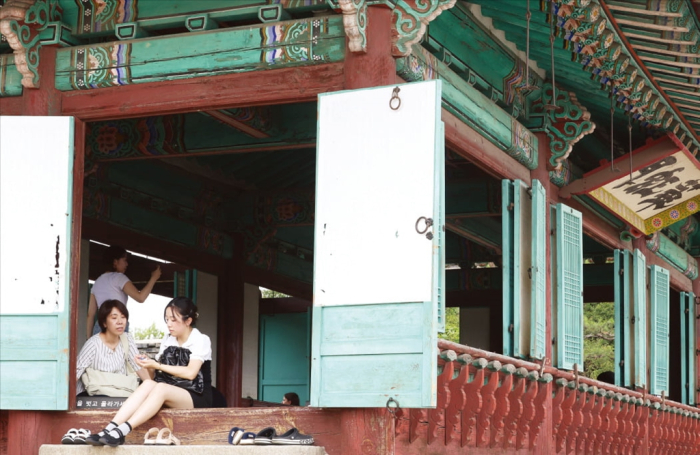
For decades, megacity malls in Myeongdong and other neon heart of Seoul have been the must-visit places for Chinese tourists, mostly in large groups.
However, destinations once absent from Chinese itineraries – fishing villages in Tongyeong on the southern coast of South Korea, tidal flats in Gochang and gardens in Suncheon on the country’s west coast line – are now drawing steady flows of young, independent travelers, many of them influenced by social media platforms such as Xiaohongshu, known in English as RedNote, and Douyin.
Analysts said Korea is witnessing a shift in the profile and habits of Chinese visitors, as the once-dominant big-spending package tourists shepherded through Myeongdong department stores give way to younger, tech-savvy independent travelers armed with social media itineraries and a taste for the unconventional.
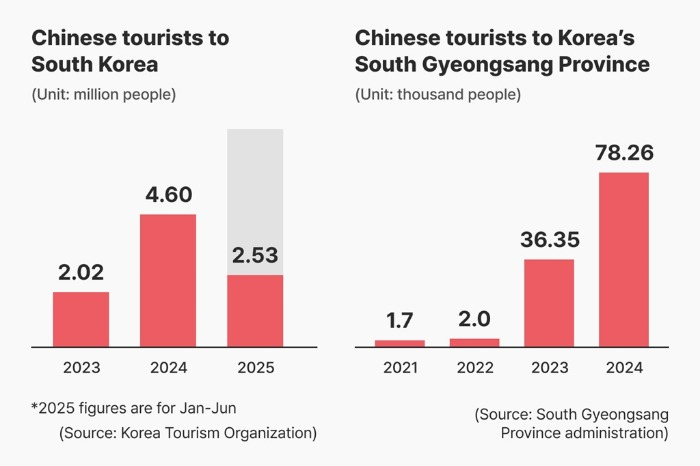
According to a survey by LG Uplus Corp. and NICE Jini Data Co., commissioned by The Korea Economic Daily, some 22,700 Chinese tourists visited nine regional locations, including Gochang, Suncheon and Tongyeong in the first half, up 14.1% from a year ago.
South Gyeongsang Province, boosted by direct flights from Beijing to Gimhae, has seen arrivals surge more than 4,500% in three years.
Tongyeong and neighboring Geoje have emerged as favorite weekend getaways for Chinese students in Korea, drawn by seafood markets, coastal scenery and regional snacks such as ggulppang, or honey bread.
REMOTE INLAND DESTINATIONS
Even remote inland destinations are benefiting.
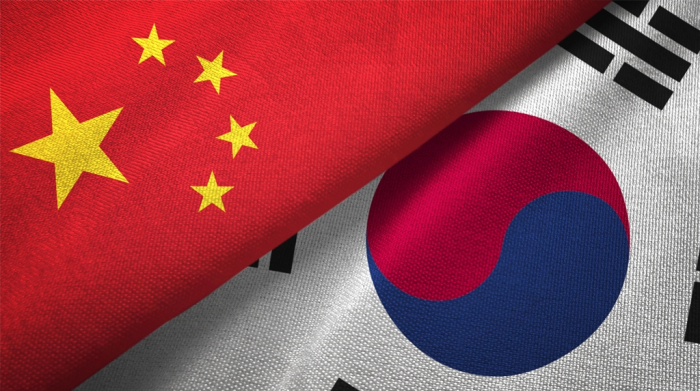
In Gochang, best known domestically for its barley fields and sunsets, Chinese visitors now arrive independently to tour drama filming sites such as Mr. Sunshine, officials said.
Since a direct bus from Incheon, near Seoul, to Gochang was introduced in March, numbers have risen sharply.
Suncheon’s high-speed rail station delivers individual Chinese tourists to the wetlands of Suncheon Bay and the preserved village of Nagan Eupseong Folk Village.
“Tourists who used to go straight to Seoul are now visiting the provinces first,” said a North Jeolla Province government official. “Mountains, hot springs and medicinal herbs are popular among Chinese people.”
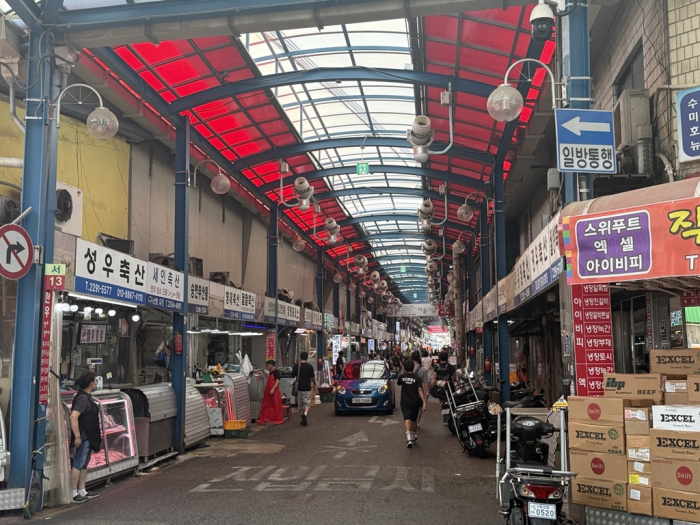
VISA WAIVER, APEC SUMMIT IN OCTOBER
According to the Korea Tourism Organization, 2.53 million Chinese tourists visited Korea in the first half, up 13.8% from the year-earlier period.
That puts arrivals on track to exceed 5 million for the year – something not achieved since the 2017 THAAD missile defense dispute between Seoul and Beijing triggered an unofficial ban on Korean cultural exports.
With the Korean government allowing visa-free entry for tourist groups from China starting Sept. 29 through June 2026 and speculation mounting over a possible visit to Seoul by Chinese President Xi Jinping in October, analysts say numbers could climb to as high as 7 million.
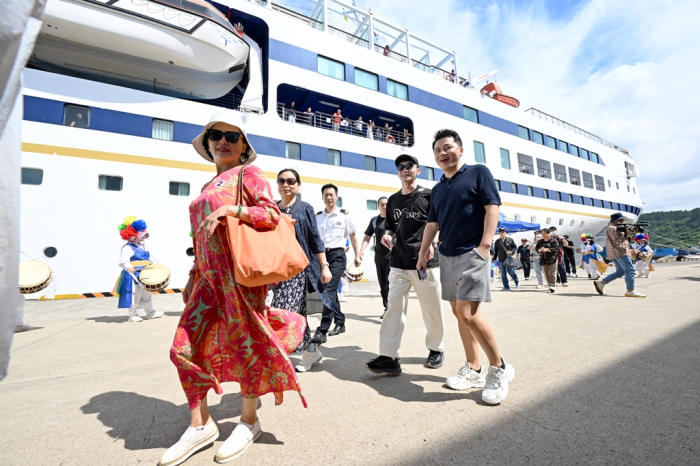
Korea is slated to host the APEC summit in the southeastern city of Gyeongju from Oct. 31 to Nov. 1. Chinese leader Xi Jinping and US President Donald Trump could attend the meeting, industry officials said.
“If Beijing’s unofficial ban on Korean cultural content is lifted, following Seoul’s visa waiver moves, we’ll see not just individual travelers but also a substantial recovery of package tourists,” said Jung Ran-su, head of the Future Tourism Strategy Institute.
SHIFT IN SPENDING HABITS
New Chinese visitors are also spending differently.
While group tourists once packed luggage with cosmetics and luxury goods from Seoul duty-free stores, young, individual tourists are more likely to seek out culinary and cultural experiences.

In Seoul, that means bypassing Myeongdong for Majangdong’s beef market or the hipster alleys of Mangwondong.
“Majangdong is a must-see in Korea,” said Zhang Zhijie, a 39-year-old tourist queueing for a lunchtime table. “I came early to try the best cuts of Korean beef.”
Staff at a Korean restaurant in Majangdong said about 10 tables a day now go to small groups of Chinese visitors ordering premium Korean beef cuts such as anchangsal and saewoosal.
Large-scale events are another draw.
Blackpink’s concerts in Goyang last month had enough mainland fans to justify Chinese-language banners and a dedicated queue.
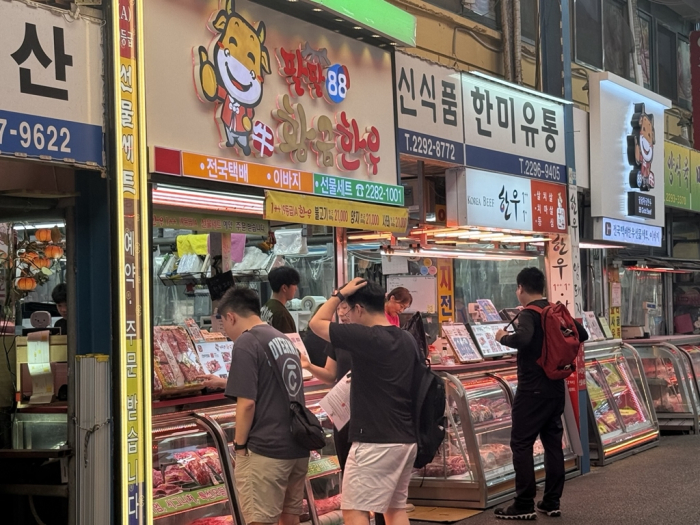
Subway stations in tourist-heavy areas are also adapting. Yeouido Station on Seoul’s Line 5 now offers Chinese-language ticket machines, logging more than 8,300 uses over the past year.
Analysts see the individual tourism boom as more than a short-term rebound.
“Repeat visitors are looking for fresh content beyond Seoul and Busan,” said Kim Nam-jo, professor of tourism at Hanyang University in Seoul. “Their spending power is catching up with package tourists, so the priority now is to diversify the tourism offering.”
By Young-Ri Kim and You-Jin Kim
smartkim@hankyung.com
In-Soo Nam edited this article.















